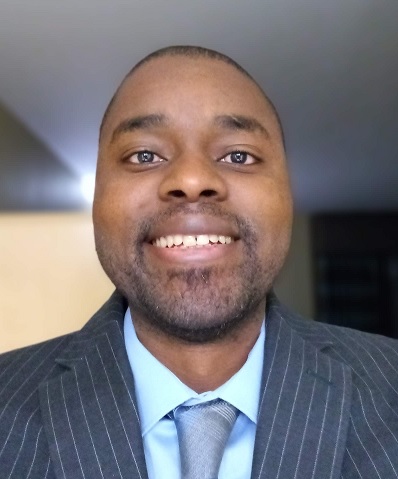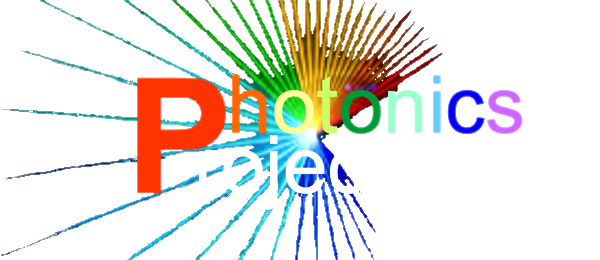Dr. Chaffra Affouda is a Business Development Director at Anduril Imaging, where his role is to grow the core technologies that will enable the next generation of infrared focal plane arrays and systems. He graduated from SUNY-Albany, Albany, NY in 2006 with a Ph.D. in Materials Science. He then accepted a Postdoctoral Research Fellowship with the National Research Council and was assigned to the US Naval Research Laboratory (NRL) where he rapidly became a lead scientist developing infrared materials and devices. From NRL, Dr. Affouda accepted a position as a Sr. Principal Systems Engineer at Raytheon Technologies where he worked on developing multi-functional, neuromorphic infrared imaging sensors and cameras. Although his current activities include many managerial tasks, he remains an avid software programmer working to create simulation tools and models that are accessible to a wide audience of engineers, managers, students, and infrared photonics enthusiasts.

Photonics Project: Chaffra – thanks for taking the time for some questions and answers. First of all, tell us a little about your current role and organization?
Chaffra: Sure, glad for the opportunity. My new job is Business Development Director for Anduril Industries, Imaging Division. In this role I’m very customer facing and interacting with the user community quite a bit. I help develop roadmaps and technical strategies, “solutions” you might say, for the customers based on both our company strengths and existing products but also emerging technology trends that will help define the next generation of products.
Photonics Project: Great. So that’s a pretty big change for you then. You have always been a technology expert and EO analyst. And you have written a lot of code yourself including some modules we will speak to shortly.
Chaffra: Well yes and no. I still am very active in trade studies and architecture development that is needed during the initial phases of a project. This can be systems analysis during a proposal or the like. Sometimes this can be at concept level analyzing user requirements before they even become proposals and helping to define the next technology wave. But yes, a lot more front end of the business communicating with customers and understanding both technical needs and budgetary trends.
Photonics Project: So, what are you guys working on now at Anduril?
Chaffra: The Imaging Division has lots of interesting stuff of course, but I would start off with our flagship product which is the WISP imager. It is based on the MIT/LL digital pixel ROIC and is a LWIR sensor with 360 x 125 degrees coverage. It has been deployed all over the world by DOD and other users. This can be at anything from a Forward Observing Base where adversaries are overtly active, to domestic or other secure facilities where counter intrusion is the key.
From there we are of course developing a lot of newer stuff. It’s no surprise that larger format and smaller pixel pitches are always of interest to gain more resolution and ability to spot things earlier.
Then you have the ubiquitous AI/ML that is influencing how we do everything, not only in imaging but pretty much everywhere.
Photonics Project: Right, have you tried ChatGTP? It’s totally amazing. I had it write some python scripts for astronomy and other applications, then some marketing material for someone, and then just a few poems a rap song, as well as a resume update. All were top quality, and in a few seconds each!
Chaffra: Yes, so we need to incorporate these types of advances into our thinking and into our products to stay competitive. On top of pure Electro-Optical sensitivity, we need the ability to determine what inputs are relevant very rapidly from a large stream of incoming data and filter that down to a manageable amount. For an AI/ML imaging system that can take a lot of training on the algorithm and some significant computing power. So being as efficient as possible with those things can be a key distinguisher going forwards.
ChatGTP is a glimpse of that for the average person to see and use in their own life, and we need to leverage that approach and those type of tools as much as possible professionally in our products.
Photonics Project: Right. A lot of public domain articles focus on ChatGTP downsides, like cheating on school assignments and such. But my kids were in school when Wikipedia came online, and I remember the same comments – teachers thought it made researching topics too easy and they had to adapt their curriculum. Actually, I remember when I was in school and the first electronic calculators came out and they said kids would not learn their times tables, or that we should not rely on these electronics crutches etc. So, for me I don’t focus on the downsides, but look for ways we can all utilize this new and powerful tool.
Chaffra: Absolutely. So pragmatically for us, we are looking at imaging products and particularly security and intrusion related applications – so distinguishing drones from birds, and things like tracking people or vehicles through clutter environments are key applications. And having the right algorithms, and training examples are key as well as the right processing hardware.
The human eye and brain are still hugely far ahead in a lot of regards, as one can see from automated driving. But AI/ML are gaining fast.
Photonics Project: Sounds good. Some important goals and interesting technology there for sure. By the way, how did you get started with Infrared Technology?
Chaffra: Well, believe it or not, I started my career in the field of spintronics. However, I got tired of studying physical phenomenon happening at very low temperatures, so I branched out to work on more practical problems in the field of infrared imaging only to find out that IR materials also need to be cooled! But I very much enjoy working on imaging products. They have a direct impact on our lives.
Photonics Project: Which brings us to our next question, what do you think of the site and tools, and how can we improve?
Chaffra: Well, as you know I have been a fan of the site and have been following along in its progress. I am a big believer in interactive tools and have created several myself as you know. The key strengths are obviously the graphical interactive nature of the website, and the widespread use that this enables. I understand you have several courses that utilize the site?
Photonics Project: Correct, both the UC Santa Barbara, and GTRI Infrared short courses are utilizing the tools, as well as another course in the Huntsville area. The actual origin of the concept is for Prof Driggers EO Systems Design course at University of Arizona. We developed the site in parallel with the Third Edition of the textbook used in his course, so that individual tools compliment particular chapters in the book. He is in session now with the class.
Chaffra: Great. The equations and descriptive diagrams with each tool seem like they will be super helpful for learning each concept and understanding key drivers and interactions. Each tool is simple to enough to understand on its own for the first-time user and sets them up for success going into the next module.
Photonics Project: Thanks. Did you see any areas for improvement?
Chaffra: Sure, there are always a few of those! I think the key thing that separating all the modules out is then the lack of being able to quickly and easily see how the various inputs directly influence the big picture. For instance, on the final NETD tool tweaking the pixel pitch input will change the NETD as expected, but if the photocurrent and dark current are not simultaneously adjusted to correspond to the new pixel size, it could lead to some unrealistic results. Although, on the other hand, that is what the NETD equations predict for those inputs so in a theoretical sense the trends are correct even if the described system is unlikely.
Another thing is just some updates such as including a ROIC tool. A digital pixel model would be great there and prepare students for modern designs with these features. Just an independent residual counter with its own noise terms complimenting the downstream digitizer would do that.
Photonics Project: Yes, we have been thinking the same thing. Maybe shortly.
Chaffra: Another good one we have discussed is a photo-diode model. Any progress on posting up the DiodeModel? I tried to make it simple and interactive for users to get a sense of dark current contributions and shape in a 2-diode model approximation. The model uses the ubiquitous Rule 07 for infrared detectors saturation dark current in reverse bias and the user can play with the shunt and series resistance parameters to see how they affect the IV curve.
Photonics Project: Hope to have it up when this interview goes live!
Chaffra: The only other one I would mention is to chain the tools together to allow a full scenario evaluation at once. I think that is an obvious step you must have considered.
Photonics Project: Yes, it’s on the short list. We may put that up on the GitHub once it is done. So, any final comments on what’s next for you personally and professionally, and where you see taking the Imaging Division?
Chaffra: Actually, my kids are taking some music course now and hear my son playing piano, and I think having an outlet like that could be fun and relaxing. So, I have been trying keyboard a little bit and considering maybe guitar. Physically playing the music is more engaging than just listening and is gratifying.
For the Imaging Division, continuing to grow the business is key and I see a ton of applications continuing to open-up in a variety of commercial and other sectors. We will be looking at several opportunities to expand into new areas for us, as well as advancing our current products to the next level of sophistication and automation.
Photonics Project: Fantastic, Thanks again!
